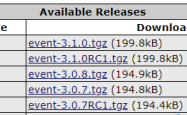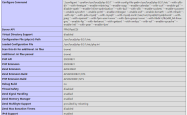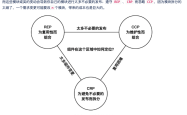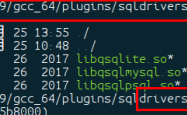Laravel Eloquent ORM高级部分解析
查询作用域
全局作用域
全局作用域允许你对给定模型的所有查询添加约束。使用全局作用域功能可以为模型的所有操作增加约束。
软删除功能实际上就是利用了全局作用域功能
实现一个全局作用域功能只需要定义一个实现Illuminate\Database\Eloquent\Scope接口的类,该接口只有一个方法apply,在该方法中增加查询需要的约束
| 1 2 3 4 5 6 7 8 9 10 11 12 13 14 15 16 17 18 19 | <?php namespace App\Scopes; use Illuminate\Database\Eloquent\Scope; use Illuminate\Database\Eloquent\Model; use Illuminate\Database\Eloquent\Builder; class AgeScope implements Scope { /** * Apply the scope to a given Eloquent query builder. * * @param \Illuminate\Database\Eloquent\Builder $builder * @param \Illuminate\Database\Eloquent\Model $model * @return void */ public function apply(Builder $builder , Model $model ) { return $builder ->where( 'age' , '>' , 200); } } |
在模型的中,需要覆盖其boot方法,在该方法中增加addGlobalScope
| 1 2 3 4 5 6 7 8 9 10 11 12 13 14 15 16 17 | <?php namespace App; use App\Scopes\AgeScope; use Illuminate\Database\Eloquent\Model; class User extends Model { /** * The "booting" method of the model. * * @return void */ protected static function boot() { parent::boot(); static ::addGlobalScope( new AgeScope); } } |
添加全局作用域之后,User::all()操作将会产生如下等价sql
| 1 | select * from `users` where `age` > 200 |
也可以使用匿名函数添加全局约束
?| 1 2 3 | static ::addGlobalScope( 'age' , function (Builder $builder ) { $builder ->where( 'age' , '>' , 200); }); |
查询中要移除全局约束的限制,使用withoutGlobalScope方法
| 1 2 3 4 5 6 7 | // 只移除age约束 User::withoutGlobalScope( 'age' )->get(); User::withoutGlobalScope(AgeScope:: class )->get(); // 移除所有约束 User::withoutGlobalScopes()->get(); // 移除多个约束 User::withoutGlobalScopes([FirstScope:: class , SecondScope:: class ])->get(); |
本地作用域
本地作用域只对部分查询添加约束,需要手动指定是否添加约束,在模型中添加约束方法,使用前缀scope
| 1 2 3 4 5 6 7 8 9 10 11 12 13 14 15 16 17 18 19 20 21 22 23 24 | <?php namespace App; use Illuminate\Database\Eloquent\Model; class User extends Model { /** * Scope a query to only include popular users. * * @return \Illuminate\Database\Eloquent\Builder */ public function scopePopular( $query ) { return $query ->where( 'votes' , '>' , 100); } /** * Scope a query to only include active users. * * @return \Illuminate\Database\Eloquent\Builder */ public function scopeActive( $query ) { return $query ->where( 'active' , 1); } } |
使用上述添加的本地约束查询,只需要在查询中使用scope前缀的方法,去掉scope前缀即可
| 1 2 3 4 5 6 7 8 | $users = App\User::popular()->active()->orderBy( 'created_at' )->get(); // 本地作用域方法是可以接受参数的 public function scopeOfType( $query , $type ) { return $query ->where( 'type' , $type ); } // 调用的时候 $users = App\User::ofType( 'admin' )->get(); |
事件
Eloquent模型会触发下列事件
creating`, `created`, `updating`, `updated`, `saving`, `saved`,`deleting`, `deleted`, `restoring`, `restored
使用场景
假设我们希望保存用户的时候对用户进行校验,校验通过后才允许保存到数据库,可以在服务提供者中为模型的事件绑定监听
?| 1 2 3 4 5 6 7 8 9 10 11 12 13 14 15 16 17 18 19 20 21 22 23 24 25 26 27 28 29 | <?php namespace App\Providers; use App\User; use Illuminate\Support\ServiceProvider; class AppServiceProvider extends ServiceProvider { /** * Bootstrap any application services. * * @return void */ public function boot() { User::creating( function ( $user ) { if ( ! $user ->isValid()) { return false; } }); } /** * Register the service provider. * * @return void */ public function register() { // } } |
上述服务提供者对象中,在框架启动时会监听模型的creating事件,当保存用户之间检查用户数据的合法性,如果不合法,返回false,模型数据不会被持久化到数据。
返回false会阻止模型的save / update操作
序列化
当构建JSON API的时候,经常会需要转换模型和关系为数组或者json。Eloquent提供了一些方法可以方便的来实现数据类型之间的转换。
转换模型/集合为数组 - toArray()
?| 1 2 3 4 | $user = App\User::with( 'roles' )->first(); return $user ->toArray(); $users = App\User::all(); return $users ->toArray(); |
转换模型为json - toJson()
?| 1 2 3 4 | $user = App\User::find(1); return $user ->toJson(); $user = App\User::find(1); return (string) $user ; |
隐藏属性
有时某些字段不应该被序列化,比如用户的密码等,使用$hidden字段控制那些字段不应该被序列化
| 1 2 3 4 5 6 7 8 9 10 11 12 | <?php namespace App; use Illuminate\Database\Eloquent\Model; class User extends Model { /** * The attributes that should be hidden for arrays. * * @var array */ protected $hidden = [ 'password' ]; } |
隐藏关联关系的时候,使用的是它的方法名称,不是动态的属性名
也可以使用$visible指定会被序列化的白名单
| 1 2 3 4 5 6 7 8 9 10 11 12 13 14 | <?php namespace App; use Illuminate\Database\Eloquent\Model; class User extends Model { /** * The attributes that should be visible in arrays. * * @var array */ protected $visible = [ 'first_name' , 'last_name' ]; } // 有时可能需要某个隐藏字段被临时序列化,使用`makeVisible`方法 return $user ->makeVisible( 'attribute' )->toArray(); |
为json追加值
有时需要在json中追加一些数据库中不存在的字段,使用下列方法,现在模型中增加一个get方法
| 1 2 3 4 5 6 7 8 9 10 11 12 13 14 15 16 17 18 19 20 21 | <?php namespace App; use Illuminate\Database\Eloquent\Model; class User extends Model { /** * The accessors to append to the model's array form. * * @var array */ protected $appends = [ 'is_admin' ]; /** * Get the administrator flag for the user. * * @return bool */ public function getIsAdminAttribute() { return $this ->attributes[ 'admin' ] == 'yes' ; } } |
方法签名为getXXXAttribute格式,然后为模型的$appends字段设置字段名。
Mutators
在Eloquent模型中,Accessor和Mutator可以用来对模型的属性进行处理,比如我们希望存储到表中的密码字段要经过加密才行,我们可以使用Laravel的加密工具自动的对它进行加密。
Accessors & Mutators
accessors
要定义一个accessor,需要在模型中创建一个名称为getXxxAttribute的方法,其中的Xxx是驼峰命名法的字段名。
假设我们有一个字段是first_name,当我们尝试去获取first_name的值的时候,getFirstNameAttribute方法将会被自动的调用
| 1 2 3 4 5 6 7 8 9 10 11 12 13 14 15 16 17 18 19 | <?php namespace App; use Illuminate\Database\Eloquent\Model; class User extends Model { /** * Get the user's first name. * * @param string $value * @return string */ public function getFirstNameAttribute( $value ) { return ucfirst( $value ); } } // 在访问的时候,只需要正常的访问属性就可以 $user = App\User::find(1); $firstName = $user ->first_name; |
mutators
创建mutators与accessorsl类似,创建名为setXxxAttribute的方法即可
| 1 2 3 4 5 6 7 8 9 10 11 12 13 14 15 16 17 18 19 | <?php namespace App; use Illuminate\Database\Eloquent\Model; class User extends Model { /** * Set the user's first name. * * @param string $value * @return string */ public function setFirstNameAttribute( $value ) { $this ->attributes[ 'first_name' ] = strtolower ( $value ); } } // 赋值方式 $user = App\User::find(1); $user ->first_name = 'Sally' ; |
属性转换
模型的$casts属性提供了一种非常简便的方式转换属性为常见的数据类型,在模型中,使用$casts属性定义一个数组,该数组的key为要转换的属性名称,value为转换的数据类型,当前支持integer, real, float, double, string, boolean, object, array,collection, date, datetime, 和 timestamp。
| 1 2 3 4 5 6 7 8 9 10 11 12 13 14 | <?php namespace App; use Illuminate\Database\Eloquent\Model; class User extends Model { /** * The attributes that should be casted to native types. * * @var array */ protected $casts = [ 'is_admin' => 'boolean' , ]; } |
数组类型的转换时非常有用的,我们在数据库中存储json数据的时候,可以将其转换为数组形式。
| 1 2 3 4 5 6 7 8 9 10 11 12 13 14 15 16 17 18 19 20 | <?php namespace App; use Illuminate\Database\Eloquent\Model; class User extends Model { /** * The attributes that should be casted to native types. * * @var array */ protected $casts = [ 'options' => 'array' , ]; } // 从配置数组转换的属性取值或者赋值的时候都会自动的完成json和array的转换 $user = App\User::find(1); $options = $user ->options; $options [ 'key' ] = 'value' ; $user ->options = $options ; $user ->save(); |
以上就是Laravel Eloquent ORM高级部分解析的详细内容,更多关于Laravel Eloquent ORM解析的资料请关注服务器之家其它相关文章!
原文链接:https://juejin.cn/post/7158848051157827621
1.本站遵循行业规范,任何转载的稿件都会明确标注作者和来源;2.本站的原创文章,请转载时务必注明文章作者和来源,不尊重原创的行为我们将追究责任;3.作者投稿可能会经我们编辑修改或补充。










